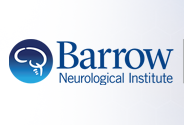A system of anatomical triangles defining dissection routes to brainstem cavernous malformations: definitions and application to a cohort of 183 patients
Document Type
Article
Abstract
OBJECTIVE: Anatomical triangles defined by intersecting neurovascular structures delineate surgical routes to pathological targets and guide neurosurgeons during dissection steps. Collections or systems of anatomical triangles have been integrated into skull base surgery to help surgeons navigate complex regions such as the cavernous sinus. The authors present a system of triangles specifically intended for resection of brainstem cavernous malformations (BSCMs). This system of triangles is complementary to the authors' BSCM taxonomy that defines dissection routes to these lesions. METHODS: The anatomical triangle through which a BSCM was resected microsurgically was determined for the patients treated during a 23-year period who had both brain MRI and intraoperative photographs or videos available for review. RESULTS: Of 183 patients who met the inclusion criteria, 50 had midbrain lesions (27%), 102 had pontine lesions (56%), and 31 had medullary lesions (17%). The craniotomies used to resect these BSCMs included the extended retrosigmoid (66 [36.1%]), midline suboccipital (46 [25.1%]), far lateral (30 [16.4%]), pterional/orbitozygomatic (17 [9.3%]), torcular (8 [4.4%]), and lateral suboccipital (8 [4.4%]) approaches. The anatomical triangles through which the BSCMs were most frequently resected were the interlobular (37 [20.2%]), vallecular (32 [17.5%]), vagoaccessory (30 [16.4%]), supracerebellar-infratrochlear (16 [8.7%]), subtonsillar (14 [7.7%]), oculomotor-tentorial (11 [6.0%]), infragalenic (8 [4.4%]), and supracerebellar-supratrochlear (8 [4.4%]) triangles. New but infrequently used triangles included the vertebrobasilar junctional (1 [0.5%]), supratrigeminal (3 [1.6%]), and infratrigeminal (5 [2.7%]) triangles. Overall, 15 BSCM subtypes were exposed through 6 craniotomies, and the approach was redirected to the BSCM by one of the 14 triangles paired with the BSCM subtype. CONCLUSIONS: A system of BSCM triangles, including 9 newly defined triangles, was introduced to guide dissection to these lesions. The use of an anatomical triangle better defines the pathway taken through the craniotomy to the lesion and refines the conceptualization of surgical approaches. The triangle concept and the BSCM triangle system increase the precision of dissection through subarachnoid corridors, enhance microsurgical execution, and potentially improve patient outcomes.
Medical Subject Headings
Humans; Medulla Oblongata; Neurosurgical Procedures; Craniotomy; Mesencephalon (surgery); Pons (surgery); Hemangioma, Cavernous, Central Nervous System (surgery)
Publication Date
3-1-2023
Publication Title
Journal of neurosurgery
E-ISSN
1933-0693
Volume
138
Issue
3
First Page
768
Last Page
784
PubMed ID
36029260
Digital Object Identifier (DOI)
10.3171/2022.6.JNS212907
Recommended Citation
Benner, Dimitri; Hendricks, Benjamin K.; Benet, Arnau; Graffeo, Christopher S.; Scherschinski, Lea; Srinivasan, Visish M.; Catapano, Joshua S.; Lawrence, Peter M.; Schornak, Mark; and Lawton, Michael T., "A system of anatomical triangles defining dissection routes to brainstem cavernous malformations: definitions and application to a cohort of 183 patients" (2023). Neurosurgery. 2112.
https://scholar.barrowneuro.org/neurosurgery/2112


